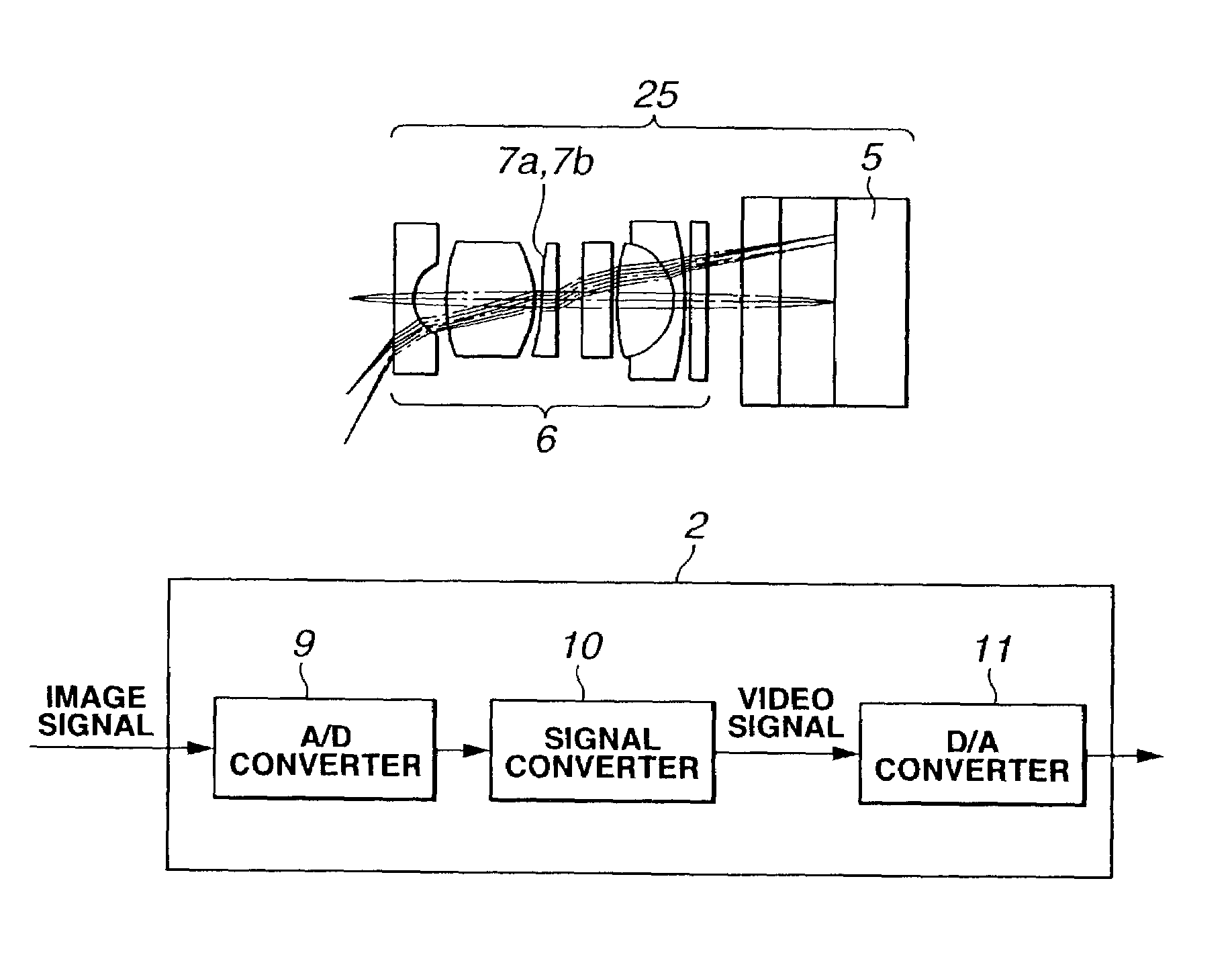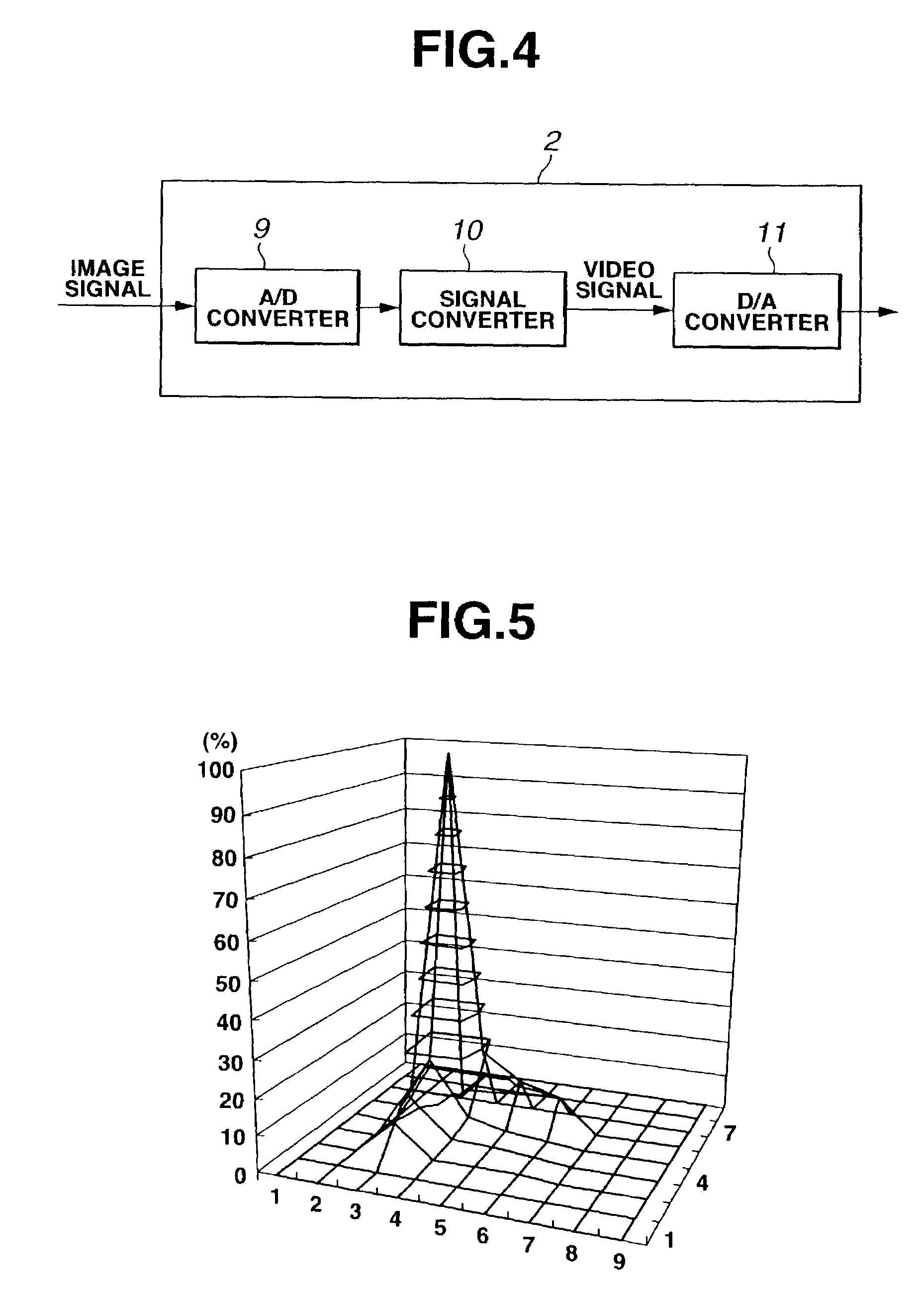Endoscope and endoscope system with optical phase modulation member
a technology of optical phase modulation and endoscope, which is applied in the field of electronic endoscope systems, can solve the problems of deteriorating optical transfer function restoring means, affecting the brightness of instruments, and affecting the quality of optical transfer functions, etc., and achieves the effect of high-resolution images
- Summary
- Abstract
- Description
- Claims
- Application Information
AI Technical Summary
Benefits of technology
Problems solved by technology
Method used
Image
Examples
first embodiment
[0072](First Embodiment)
[0073]FIG. 1 to FIG. 14 show a first embodiment of an endoscope system in which the present invention is implemented.
[0074]FIG. 1 schematically shows the configuration of an endoscope system in accordance with the first embodiment. FIG. 2 is an explanatory diagram showing the components of an imaging unit that includes an optical phase modulation mask according to the first embodiment. FIG. 3A and FIG. 3B are explanatory diagrams schematically showing the structure of an exit pupil modulation element that includes an aperture stop member according to the first embodiment. FIG. 4 is a block diagram showing the components of a camera controller (signal processing unit) included in the first embodiment. FIG. 5 to FIG. 8 are explanatory diagrams showing the results of simulation for producing a point image using the imaging unit, which includes the exit pupil modulation element according to the first embodiment, with a distance to an object set to 71 mm, 13.5 mm,...
second embodiment
[0103](Second Embodiment)
[0104]Next, a second embodiment will be described. The present embodiment has the same basic components as those of the first embodiment. The description of the components will therefore be omitted. The shape of an exit pupil modulation element different from the one employed in the first embodiment, and a signal processing circuit incorporated in a camera controller will be described mainly.
[0105]FIG. 15 to FIG. 20 show the second embodiment of an endoscope system in which the present invention is implemented.
[0106]FIG. 15 to FIG. 18 show the results of simulation for producing a point image using an imaging unit, which includes an exit pupil modulation element according to the second embodiment, with a distance to an object set to 71 mm, 13.5 mm, 7.2 mm, and 4 mm. FIG. 19 shows the results of simulation for calculating a response derived from an optical transfer function characterizing the imaging unit, which includes the exit pupil modulation element acco...
PUM
 Login to View More
Login to View More Abstract
Description
Claims
Application Information
 Login to View More
Login to View More - R&D
- Intellectual Property
- Life Sciences
- Materials
- Tech Scout
- Unparalleled Data Quality
- Higher Quality Content
- 60% Fewer Hallucinations
Browse by: Latest US Patents, China's latest patents, Technical Efficacy Thesaurus, Application Domain, Technology Topic, Popular Technical Reports.
© 2025 PatSnap. All rights reserved.Legal|Privacy policy|Modern Slavery Act Transparency Statement|Sitemap|About US| Contact US: help@patsnap.com



